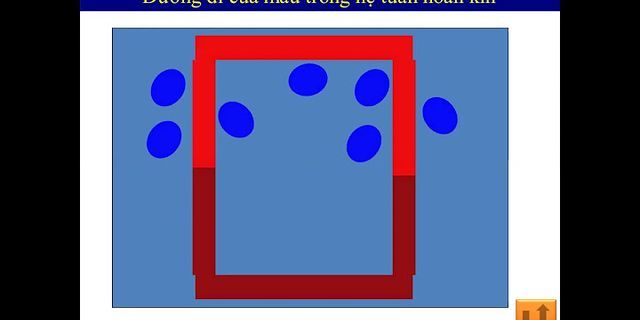View Full Version : Tiêu chuẩn FDA đối với nhựa và cao su Show David Xù 05-11-2010, 10:35 AM Xin chào mọi người, không biết đã có ai hỏi về vấn đề này chưa. Có thể có, có thể không nhưng Xù mỗ muốn hỏi về vấn đề an toàn thực phẩm khi sử dụng các loại nhựa và cao su. Teppi 05-11-2010, 05:14 PM Bạn David Xù thân mến, Tiêu chuẩn FDA (US Food and Drug Administration) có nêu rõ về vấn đề chuẩn và hạn định việc dùng nhựa và cao su trong thực phẩm. Họ phân biệt ra làm hai nhóm tiêu chuẩn : - Dùng tiếp xúc trực tiếp với thực phẩm - Dùng tiếp xúc gián tiêp với thực phẩm Đối với dạng tiếp xúc gián tiếp, các chuẩn quy định đó được quy thành mã tiêu chuẩn liên bang dạng CFR ( Code of federal regulation) mã số CR21 từ phần 174 đến 178. http://www.accessdata.fda.gov/scripts/cdrh/cfdocs/cfCFR/CFRSearch.cfm Còn đối với tiếp xúc trực tiếp thì có rải rác trong các phần của CR21. Nhựa và cao su là hai tên gọi chung nhưng nếu dùng trong công nghiệp thực phẩm thì cần phải được phần biệt rõ ràng- loại gì, dùng ở đâu, nhiệt độ dùng,... Đa phần, các phụ gia và hóa chất khác trong nhựa và cao su mới gây ra tính độc hại không an toàn với người dùng qua đường tiêu hóa. Đó là hiện tượng di trồi các chất độc hại này từ trong nền nhựa vào trong thực phẩm.Quá trình đó có sự tiếp tay bởi nhiệt độ (đun nấu), môi chất trong thực phẩm (dầu mỡ). Mặt khác một số nhựa không bền dưới tác động của môi trường bị lão hóa và phân hủy từ từ sinh ra các hóa chất gây hại. Do vậy, không thể nói là nhựa nào cụ thể cho bạn. Tùy theo từng chủng loại thực phẩm, cách chế biến, cách tiêu dùng mà vận dụng tiêu chuẩn FDA để áp vào. từ tên nhựa đến liều lượng phụ gia - hóa chất khác có mặt trong nhựa hoặc cao su. Bạn nên nêu rõ hơn trường hợp của bạn nếu bạn đang gặp. Vì từ đó, các ví dụ hướng dẫn để bạn tìm hiểu sẽ cụ thể hơn. Bạn cũng nên biết là công việc định ra nhựa nào có thể dùng được cho loại thực phẩm nào với đầy đủ các thông số thời gian, nhiệt độ, đến hàm lượng hóa chất trong nhựa là cần có cả một tiểu ban chuyên trách. Các công ty tư vấn về luật thì cũng cần có một thư viện riêng về vấn đề này. Thân, Teppi hypericum 05-11-2010, 05:19 PM [quote=hypericum;59747]Hi ban! Minh được biết các loại nhựa dùng làm nguyên liệu đầu vào trong datasheet đều có ghi về tiêu chuẩn này,nếu cần nhà cung cấp có thể cung cấp chứng nhận đạt tiêu chuẩn dùng cho thực phẩm. Vi du như datasheet cho LLPE sản xuất túi PE đựng trực tiếp thực phẩm thường có ghi ở cuối trang ( xem file đính kèm) Teppi 05-11-2010, 05:55 PM [quote=hypericum;59747]Hi ban! Minh được biết các loại nhựa dùng làm nguyên liệu đầu vào trong datasheet đều có ghi về tiêu chuẩn này,nếu cần nhà cung cấp có thể cung cấp chứng nhận đạt tiêu chuẩn dùng cho thực phẩm. Vi du như datasheet cho LLPE sản xuất túi PE đựng trực tiếp thực phẩm thường có ghi ở cuối trang ( xem file đính kèm) Như trong trường hợp này chẳng hạn, datasheet của nhà cung cấp ghi rất rõ là "Contact your...for potential food contact application compliance" . Có nghĩa là họ không khẳng định cho chúng ta biết là nó có phù hợp theo FDA chưa mà chỉ cho chúng ta biết là họ biết cách giúp lên đơn công nghệ compounding để cho sản phẩm phù hợp với thực phẩm mà ta đang dùng nhựa LLDPE làm bao bì để này chứa theo quy định của FDA. Chẳng hạn dùng trong bao bì cho bắp ngô sẽ khác với bao bì dùng đựng bánh snack. Khi yêu cầu chứng chỉ từ FDA, họ sẽ phải qua các kiểm tra về thực phẩm-bao bì như vậy. Có thể nhựa LLDPE này OK trong tiếp xúc gián tiếp thực phẩm nhưng lại không OK trong tiếp xúc trực tiếp. hypericum 05-12-2010, 02:35 PM Đồng ý với ý kiến của Anh Teppi! vBulletin® v3.8.4, Copyright ©2000-2022, Jelsoft Enterprises Ltd.
Little Pro on 2018-09-03 The migration of a hazardous substance into the food stuff is the main safety concern for food contact materials (FCMs). The compliance of FCMs is often verified by migration testing. Suppliers of food contact materials need to demonstrate that their products comply with relevant overall migration limits (OML), specific migration limits (SML) and/or maximum permitted quantity (QM). In this article, we will give you an overview of what are OML, SML and QM and compare their differences. Overall Migration Limit (OML)The overall migration limit (OML) is the maximum permitted total amount of non-volatile substances that can migrate from a food packaging material or food container into food. The overall migration is determined by exposing the item to a chemical food simulant for a specified and appropriate length of time, after which the extracted residue is dried and weighed.
Regulation (EU) No 10/2011 on Plastic Materials and Articles has set out OMLs for plastic food contact materials and articles.
Note: OML only measures the inertness of a FCM. It is not a safety limit. Specific Migration Limit (SML) and SMLTThe specific migration limit (SML) is the maximum permitted quantity of a specific substance that can migrate from a food packaging material or food container into food. It is a safety limit derived from toxicological studies. Reliable analytical methods are needed to identify the presence of these substances in food (or food simulants).
The annex I of Regulation (EU) No 10/2011 on Plastic Materials and Articles has set out SMLs. If no SML is set, default limit 60 mg/kg food can be used for individual substances. Sometimes, total specific migration limit (SMLT) can be set for a group of similar substances. Its unit is also mg/kg food. Maximum Permitted Quantity (QM) and QMAThe QM is the maximum permitted quantity of a type or group of residual substance in a finished material or article. It is usually expressed as mg per kg food contact materials. We measure the level of the residual substane in food contact materials, not in food or food simulants. When expressed as mg per 6 dm2 of the surface in contact with foodstuffs, QM is also called QMA. Comparison of OML, SML and QM
Having Questions?We do not provide consultancy services. If you have questions or need any help, please contact our sponsor. You may also find an expert in CSP business directory below. If you are a consultant, you may get yourself listed in CSP business directory (free) or sponsor this page to leave your contact info on this page..  Tags: Topics - Food Contact, Food Contact Regulations |




















